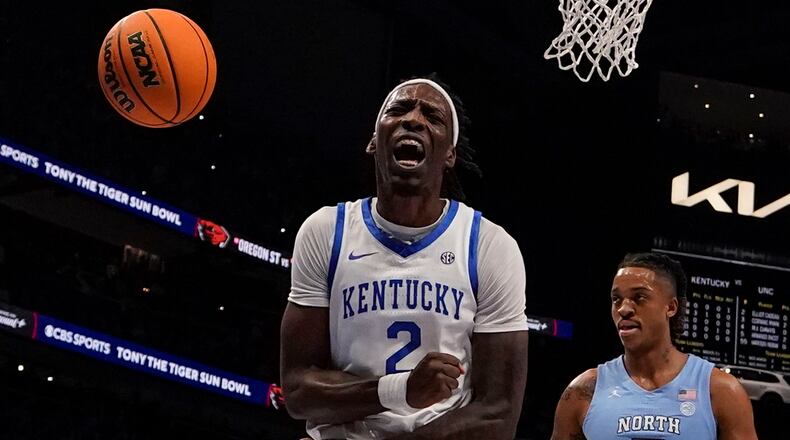The 7-foot-1, 226-pound Bradshaw was the No. 1-rated center prospect in 247Sports Composite rankings for the class of 2023 and No. 5 overall.
He played in 26 games with 10 starts for the Wildcats last season, averaging 4.9 points, 3.3 rebounds and .7 blocks per game.
The Rahway, N.J., native entered the transfer portal last week around the time long-time Kentucky coach John Calipari left to become the head coach at Arkansas.
Bradshaw is a huge addition figuratively and literally for first-year head coach Jake Diebler, who was installed as the full-time head coach of the Buckeyes last month after finishing the season strong as interim head man.
He has since gone about strengthening his roster for the present and future.
Earlier this month, Diebler picked up a commitment from Meechie Johnson, a guard who was a double-figure scorer at South Carolina the last two seasons after starting his career at Ohio State.
Last week, Ohio State got a verbal commitment from Marcus Johnson, who is Meechie’s cousin and the No. 1 prospect in Ohio for the class of 2026. The Garfield Heights lead guard is a five-star prospect at this time and 24th in 247Sports Composite national rankings.
The Buckeyes also expect to return leading scorer Bruce Thornton, a point guard who will be a junior this fall, big man Felix Okpara and 2023 Ohio Mr. Basketball Devin Royal.
On the downside, they lost starting guard Roddy Gayle Jr. and former starting center Zed Key to the transfer portal along with youngsters Bowen Hardman and Scotty Middleton.
Key announced Monday morning he is transferring to Dayton for his final season.
Aside from the appeal of Bradshaw’s overall talent, his addition could signal Diebler is more interested in playing a different style than predecessor Chris Holtmann, who was a proponent of “position-less basketball” and shied away from utilizing two big men at the same time.
With some exceptions, Holtmann also struggled to utilize the portal, suffering more misses than hits as he adjusted to the changing landscape of college basketball.
About the Author

